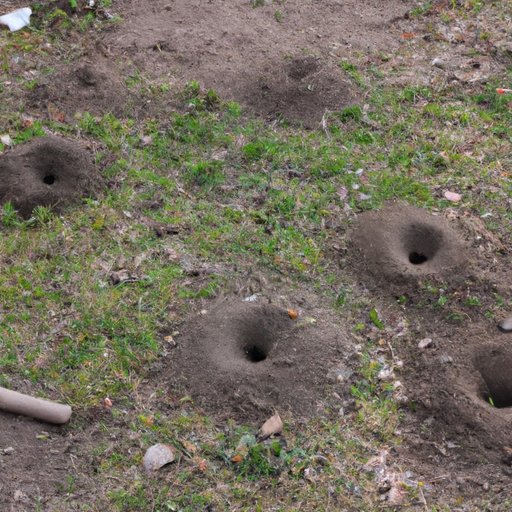
Introduction
There are few things more frustrating than finding molehills scattered throughout your yard. Not only can these creatures ruin the aesthetic of your lawn, but they can also wreak havoc on the roots of your plants and other vegetation. Thankfully, there are a variety of solutions available for getting rid of moles in your yard. In this article, we’ll explore natural approaches, trapping, chemical solutions, prevention techniques, and professional pest control options to help you effectively combat mole infestations.
The Natural Approach
If you prefer a more gentle, environmentally-friendly approach to mole removal, there are plenty of natural solutions to consider. One of the best ways to deter moles from entering your yard is by planting specific vegetation. Plants like daffodils, alliums, and marigolds are known to repel moles. Additionally, applying castor oil to your lawn has been shown to repel moles to some extent.
Another natural technique that serves as a barrier for moles is a gravel barrier. Because moles like to burrow through soft soil, incorporating gravel into your garden beds or between your lawn and mulch can help deter them. Similarly, planting daffodils and other bulb plants can also act as a barrier, since moles don’t like to eat these plants.
To maintain natural deterrents and barriers, it’s important to keep them well maintained. Keep your gravel barriers topped up, and daub fresh castor oil every couple of weeks where needed. Additionally, remove any dead or dying plant material, which can attract moles by providing cover from predators.
Trapping
If you prefer a more active solution to your mole infestation, trapping is an excellent option to consider. There are a few different types of traps available, including pitfall, snap, and live traps. Snap traps are the most common and effective type of trap, killing the mole instantly. Pitfall traps are simply a deep hole trap with the mole falling in. Live traps are cages designed to capture moles while keeping them alive.
To set up your traps, find a fresh molehill and dig a hole large enough to accommodate your trap. Place your trap into the hole, and cover it up with soil so that only the trigger mechanism is exposed. If using a live trap, release the mole back into the wild several miles from your home.
Chemical Solutions
While chemical solutions can be effective, they can also have negative consequences. Fumigants and bait poisons can harm not only moles but other animals and pets in the area. If you do opt for chemical solutions, take great care when handling and using these products. Always wear gloves to prevent skin irritation and follow the instructions on the product label. Additionally, make sure to safely store any unused product to prevent accidental exposure or ingestion.
Prevention Techniques
Of course, the best way to stop a mole infestation is to prevent it from happening in the first place. Moles are attracted to your lawn primarily due to the abundance of food sources in the form of grubs and worms. Eliminating these insect populations can help to deter moles altogether. Keeping your grass short with regular mowing can also help to eliminate cover and make your lawn less attractive to moles.
Filling in any holes or gaps is another effective prevention technique. Moles can easily access your yard through the smallest hole or crack in your fence or gate. To prevent this, inspect your perimeter regularly and fill in any holes or gaps that you discover.
Calling in the Professionals
If natural solutions, trapping, or chemical solutions don’t work for your mole infestation, there’s always the option of calling in professional pest control services. They can identify the severity of the infestation, identify the mole species, diagnose any wider pest problems and schedule regular check-ups if necessary.
Speaking of costs, many pest control companies charge by the hour for services rendered with some charging for visits while others offer a package fee based on the severity of the infestation. When selecting a company, choose a reputable one with a proven track record of achieving successful results.
Conclusion
There are various solutions for getting rid of the pesky moles in your yard. Depending on your preference and budget, you can select among the natural, trapping, chemical, and prevention techniques as well as professional help. While natural approaches might take longer to work, they are safer and more environmental-friendly. Similarly, trapping can be a good option for those who are hands-on and want more control throughout the process. Chemical solutions are quick but have negative consequences. Prevention techniques are easy to do in averting mole infestation in the first place. Lastly, professional pest control services are always available if more in-depth analyses of the situation is needed. Whatever solution you choose, remember to take action and implement your chosen solution to keep your yard a beautiful and healthy one.




